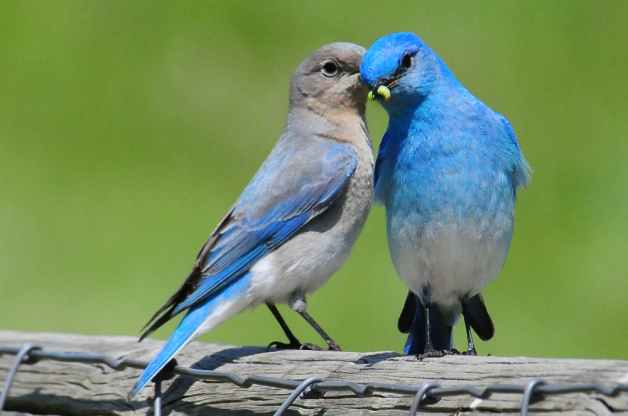
|
Nest Locations of Birds - Page 1 If asked to picture a typical bird nest, most people think of a bowl-shaped nest woven of twigs and grasses and situated in a tree, a shrub, or in dense grass. Most common songbirds of our forests, fields, and gardens use this type of nest. But birds nest in places ranging from treetops to holes in the ground. Nesting in dense cover, especially off the ground, provides safety from predators. For the same reason, many species nest in cavities in trees or in birdhouses. Woodpeckers excavate their own holes in trees; Bluebirds, House Wrens, starlings, Tree Swallows, and screech-owls use abandoned woodpecker holes or existing tree cavities. The hornbill of Africa takes the protection aspect a step further: The male seals the cavity opening with mud after the female sits on the nest. The male passes food to its mate, and later to the chicks, through a small opening in the wall. On to Nest Location of Birds- Page 2 |
| Mountain Bluebird | |
|
Birds make a wide variety of nests in holes in the ground. The Belted Kingfisher excavates a tunnel and nest chamber in the face of a bank, usually near a stream. Burrowing Owls often nest in dens abandoned by prairie dogs of other mammals. Many seabirds such as puffins, auklets, and storm-petrels escape dangers of predatory gulls, which nest on the same islands, by laying and incubating their eggs in dirt burrows or crevices in pile of rocks. For these species the choice of an island colony nest site provides them with protection from mammalian predators. Return to Bird Nesting Choices |
|